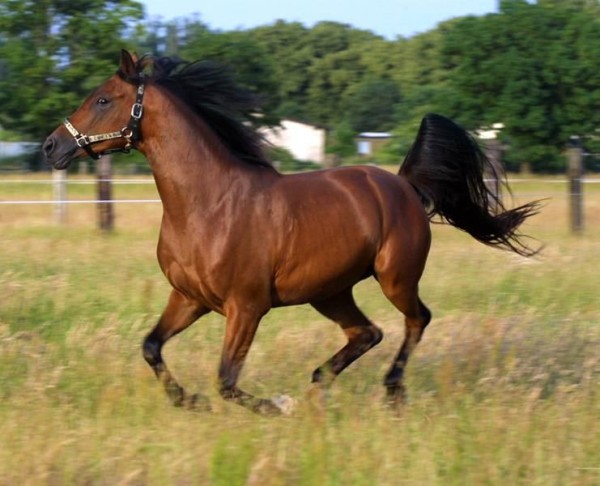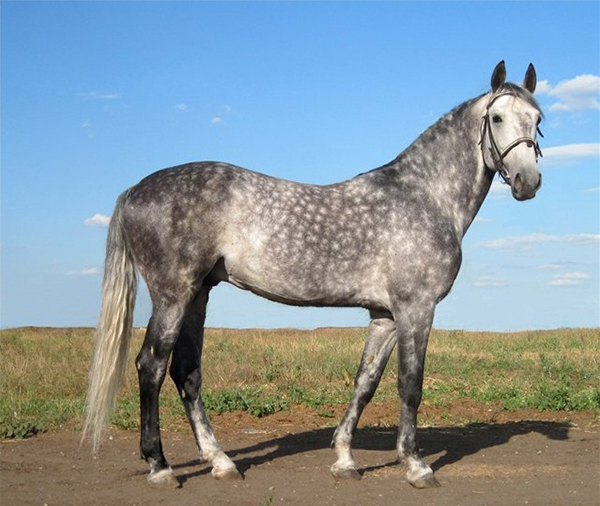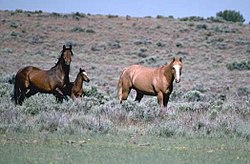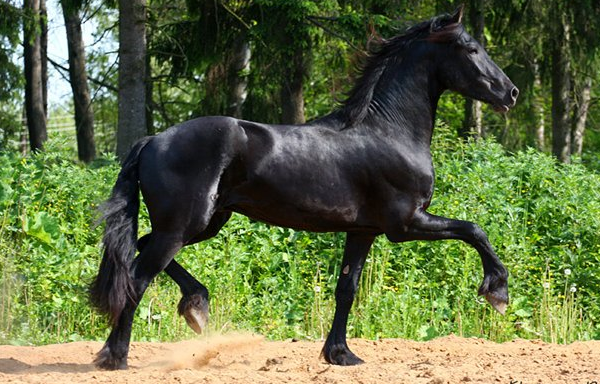OSSETIAN ROCK HORSE (part 2)
 He left the following description of horses that were used for riding by Ingush mountaineers: “Horses in the mountains are small, but hardy, light on the move” [12, p. 372].
He left the following description of horses that were used for riding by Ingush mountaineers: “Horses in the mountains are small, but hardy, light on the move” [12, p. 372].
Describing Adyghe horses, Y. Klaprot reports that their horses are of medium size, mainly chestnut or bay suits. He indicates that the best breed among the Adyghe horses is a hut, whose foal is equal to the price of a slave. At the same time, Y. Klaprot draws attention to the fact that “there are not so many good horses among the Circassians, as is usually believed” [9, p. 223]. As follows from this message, the Adyghe horses were slightly higher in growth in comparison with the horses of other highlanders. The rather large similarity of the descriptions of the horses of the mountain peoples of the North Caucasus, which is observed in written sources, probably indicates their common origin.
The question arises about the origin of the horse breed. As you know, the plain habitats of the wild horses were the steppes, semi-deserts and deserts. The appearance of a horse breed is associated with human activities. Therefore, to answer this question we will have to turn to the origins of horse breeding in the Caucasus.
In the religious beliefs of most Caucasian peoples, the horse cult plays an important role; this was the basis for the conclusion about the local origin of this cult. But the analysis of archaeological data leads to a different conclusion. Osteological material allows us to talk about the familiarity of the population of the Caucasus with a horse as early as the 3rd millennium BC. The bone remains of horses found in the North Caucasus in the settlements of the Maikop culture make up only 0.4% of osteological material. Horse bones were also found in Transcaucasia, in the settlements of Kuroarak culture. However, in the North Caucasus and Transcaucasia, horse bones make up a small percentage of osteological material, which indicates that horse breeding in the Caucasus was not developed during this period. The situation changed during the Coban period. Numerous finds of skulls and skeletons of horses indicate the existence of a horse cult and, accordingly, the development of horse breeding among Kobans. The image of a horse was popular in the fine arts of ancient Kobans, it was reflected in numerous engravings, horse figures, pins with horse protons [11, p. 34-35].
In the late Koban burials of Ossetia, Kabarda and Pyatigorye, a significant number of massive bronze horse fishing rods of early types and psalms were discovered. This archaeological material testifies to the widespread use of horses for riding in the North Caucasus in the first half of the 1st millennium BC. [6, p. 70].
The variety of horse harness forms, finds of bronze horse fishing rods and snaffles not only testifies to the use of horses in the economy and for horseback riding by the ancient population of the Central and North-West Caucasus, but also reflects the contacts of the Kobans with the population of the Pre-Caucasian steppes and the Caucasus, as well as with the tribes that inhabited in antiquity on the territory of modern Ukraine [10, p. 311].
A large number of horse burials dating from the VII-VI centuries. BC, speaks of a significant number of horses in the Caucasus during this period. The correspondence of objects in some of them with funerary equipment, known among the Scythian tribes of the Dnieper, allows them to be associated with the Scythians. Burial data show the particular importance of the horse in the funeral cult of these tribes. In this regard, it will be appropriate to note that of the modern peoples of the Caucasus, the Ossetian cult is most fully represented by the Ossetians, a people dating back to the ancient Iranian-speaking tribes of the Eurasian steppes. In contrast, the horse cult of other Caucasian peoples is represented only by some elements. Based on this, it can be concluded that it was the Iranians who brought the horse cult to the Caucasus, and accordingly horse breeding, too [11, p. 42-43].



